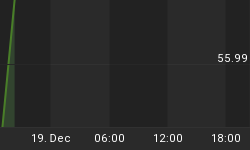The good news is:
• The number of new lows remains insignificant.
• The NYSE AD line hit a new cycle high last Friday.
• The NASDAQ new high indicator has turned upward.
• The secondaries have led the up move that began 8 tradingdays ago.
All of this implies new highs in the blue chips in the next 2 – 6 weeks. Everything that matters is heading sharply upward, in the past 8 trading days the NASDAQ composite has risen 8.2%, the Russell 2000 (R2K) has been up for 7 consecutive days (a benchmark achieved only 4 other times in the past year) and is only 0.4% off its all time high.
Last week I showed several charts of Summation indexes (SI). These indicators are calculated by summing the values of an oscillator, when the oscillator is above 0 the SI rises, when it is below 0 the SI falls. At the end of last week all of the SI's were falling but two out of three on the S&P 500 (SPX) and (R2K) were about to turn upward. I have mentioned frequently that when all of the SI's are heading in the same direction, it is imprudent to bet against them. Last week all of the SI's on all of the major indices, the NYSE and NASDAQ turned upward. The chart below showing SI's calculated from the component issues of the R2K is typical.

I have mentioned the problem of NYSE data being contaminated with fixed income issues in the past. Justin Mamis wrote about the problem more than 10 years ago calling it the Nuveen factor and pointing out at that time 2.3% of the issues traded on the NYSE were essentially bond funds sponsored by the Nuveen company alone. I have read recent accounts claiming that more than 50% of issues traded on the NYSE are fixed income related. I have never read anything definitive, but the numbers reported Friday show the problem.
The numbers for Friday were:
Dow Jones Industrial Average (DJIA) = up 0.94%
SPX = up 0.85%
NYSE composite = up 0.54%
R2K = up 1.37%
Shearson Lehman Treasury Bond index = down 2.08%
On Friday there were 1724 Advancing issues and 1570 declining issues on the NYSE. Putting that in percentage terms 1724 / (1724+1570) = 52% advancing and 48% declining, a modest plurality for such a strong day.
The tables below show similar calculations limited to the component issues of the R2K and SPX:


Looking at the NYSE figures might lead you to conclude the advance was concentrated in relatively small number of high cap issues, a pattern indicative of tops. Limiting the calculations to equities presents a more positive picture.
Paraphrasing the old Burger King Ad: Bonds is Bonds raises the question "Which Bonds?"
Last week was pretty rough on corporates and treasuries, but, not so bad for junk.
The chart below is an update of one I showed last week, it covers the past 1.5 years and shows an average of 162 junk bond funds in the FastTrack database (BD-Junk.fam) in red and the percentage of those funds that are above their 50 day EMA in blue. The percentage of junk bond funds above their 50 day EMA has remained extremely high over the past 1.5 years with three exceptions:
1) The low of October 2002.
2) The period of weakness July-August 2003.
3) The current period.
Those periods coincide with weak periods in equities. Last week the percentage of Junk bond funds above their 50 day EMA moved upward suggesting the soft patch in equities has ended.

Last week I could not find convincing evidence that the soft patch had ended. This week there is no evidence that it has not ended.
I expect the major indices will be higher on Thursday April 8 (the market is closed Good Friday April 9) than they were on Friday April 2.
My forecast for last week was spectacularly wrong. With indicator development there is a trade off between smoothness for clarity and lag. Last week's forecast highlighted the problems inherent in that trade off.
















